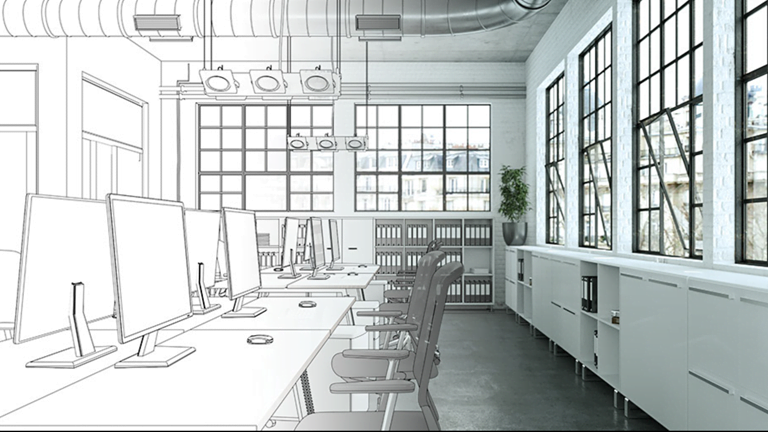Emerging Workplace Design Trends: What Will Stay and What Will Go
I recently read an article on frameweb.com about how Covid-19 could influence and impact workplace design. What struck me most about this article was not the brilliant design solutions already being considered, but how many of these designs have been developed, tried, and tested pre Covid-19!
So many designs have already incorporated AI into the fabric of building design specifically office buildings, as seen with Cube Berlin and Bee’ah Head Office in the UAE. I think AI is definitely the way to move forward when it comes to offices and public spaces. Images of the movie Minority Report come to mind with retina scans to custom advertising, hologram “phones” and handsfree cars! (Can this really be happening in my lifetime?!)

Seeing how design is being challenged and developed in a time such as this is very exciting indeed, but I found myself asking the following questions; “How do we as designers create spaces that not only make us feel safe in public spaces but bring us back together?” Also, “Which trends will stay and which will be seasonal?”
I would like to focus on 2 trends I have noticed coming through more and more.

Flexible Design
The design trend that keeps emerging seems to be flexible, interchangeable and accommodating. As these are unprecedented times of change we live in, it is only logical that we will see this style of design coming through. Not that custom design is a thing of the past, but it is more about designing for ever-changing eventualities. We can see this with Spanish design company Andreu World, who recently designed work tables that can be equipped with custom options and finishes to fit the specific needs of a workforce (or anyone for that matter). Coincidentally (or is it?) these tabletops can be clad with material finishes which includes wood, lacquer or marble, all of which are anti-bacterial products. Wood and marble have been known for their natural antimicrobial properties for years and so has antimicrobial lacquer. I think if we check out any design blog, magazine or web page, we would find a plethora of new ideas and materials emerging every day. That in itself can be very overwhelming, but if we look closely (or do a bit of research like I have) these products and materials have been around for ages. Some we have known about and some we are rediscovering.
Materials
Some antimicrobial materials which have been popular in the healthcare sector, give designers a completely new material inventory. As mentioned before we know that wood has natural antibacterial properties and so do marble and copper, but manufacturers are already integrating antimicrobial technology in interior design elements such as taps, window shades, paint, and door hardware — applying coatings that work to keep them cleaner from multiplying bacteria. However a word of caution that the science and understanding of these antimicrobial technologies are still emerging, so it is important, to consider only those materials that are dimensionally stable and will not result in unintended exposure and alternative health risks at a later date. It is also important to note that many of these materials are available to us now, we just need to use them in a different way.
Emma Stergoulis has pointed out so brilliantly in her article for Urban.com.au about the design lessons we will learn from Covid-19 and how it will impact our lives, by saying: “It turns our mind to how we need to adapt our design thinking to cope should such a situation arise again.”
The need to think differently about how we respond to design is ultimately what will make the lasting change and the one simple truth that people matter. After all, we cannot call ourselves designers if we do not educate, encourage, and improve our way of living, by the way, we design for others and ourselves.
I’m excited about what the future will bring and how we can improve at designing spaces that not only connect us to each other and technology but in turn create distinct and new experiences.
Image: courtesy of Cushman & Wakefield
Article by ISCD graduate, Eunice Aubert, founder of EA Design.
ISCD has a 40-year proven track record of producing leading Australian interior designers. We know design intimately, from colour theory, to furniture selection to the latest industry trends.
Are you interested in studying interior design or decoration? Do you want to know more about our online courses and where a career in interior design could take you? Connect with us today to learn more about our Diploma of Interior Design, the Certificate IV in Interior Decoration or any of our industry-focused microcredentials.